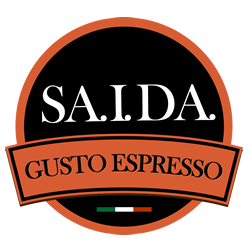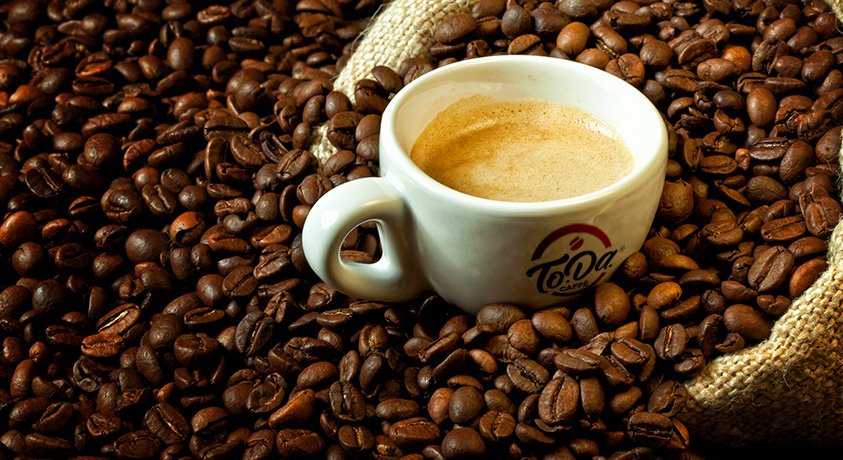Arabica or Robusta this is the dilemma? Joking aside, even today numerous people wonder what the difference is between Arabica and Robusta. And again what is the best coffee blend. What about you, have you made your choice yet? If you still have any doubts, continue reading our article to find out the differences and understand, between Arabica and Robusta blends, which one is right for your palate! Happy reading!
Arabica or robusta, the perfect choice!
Let’s start by saying that as of today most people know that there are two species of coffee, namely arabica and robusta. Despite this, it is also true that apart from basic knowledge, many people do not know the difference properly.
For true connoisseurs, always on the lookout for good Italian espresso, the differences are substantial. First we can mention the different number of chromosomes present, 44 for Arabica and 22 for Robusta. The most significant differences, however, are found in the content of:
-
oils: 18% arabica and 9% robusta
-
sugars: 8% arabica and 5% robusta
-
Caffeine: 0.9% to 1.7% arabica and 1.6% to 2.8% robusta
Let’s talk about coffea arabica
Coffea arabica, or the plant from which Arabica coffee originates, accounts for about 70 percent of the coffee that is produced worldwide. There is no doubt that it is also the most popular variety. Features? On the palate,Arabica has a more aromatic, delicate and more acidic flavor. From a “physical” point of view, however, the grain has an oval shape. When tasted, on the palate, this blend is characterized by a strong, assertive flavor with a sweet aftertaste.
What about caffeine? Its occurrence varies from 1.1 percent to 1.7 percent, while in terms of origin, we can say that the areas involved are mostly South America, Central America, Africa, and the equatorial zone of the East.
… and more of Canephora
Let us now turn to the species “canephora,” generally known as Robusta
.
Its name is derived
from its particular resistance to insects, diseases and temperature changes. And what about its taste? It is definitely assertive and rich, with an intense and persistent aroma. Its full body and strong, woody taste with a hint of chocolate make it unique.
As for Robusta coffee, however, this blend has 2% to 2.5% caffeine. Finally, for cultivation, remember these areas: West Africa (Cameroon, Ivory Coast, etc.) and still the Far East (Vietnam and Indonesia).
Arabica o Robusta? It’s a matter of cultivation!
We continue to talk about the differences between Arabica and Robusta coffees. Did you know that coffee plants grow in the equatorial zone of the planet? Greenhouse cultivation in the Mediterranean has been tried, but to date we can only speak of experimental results and not yet fully satisfactory.
As for the soil, coffea arabica is of volcanic origin, rich in minerals. These types of soils are found between 900m and 2000m above sea level, with the temperature varying between 15 and 24 degrees. In contrast, canephora can tolerate dry climate and soil. Not surprisingly, it develops at altitudes below 900m, with temperatures ranging from 24 to 30 degrees.
As you can well understand, the two varieties have different qualities precisely because they
they grow under different conditions
. In the market it is possible to find different solutions: 100% Arabica and again 100% Robusta, as well as a variety that sees the right compromise between the two types, for a perfect balance between the intense Robusta blend that decisive Arabica, as in the case of the Branded waffles SA.I.DA. Espresso Pods.
Arabica or Robusta: washing and grinding
Arabica beans have a flat, elongated shape that result in a particularly aromatic coffee, since it is richer in oils, finer. In addition, this type of coffee is sweeter because it has more sugar in it, with a lower amount of caffeine. From a commercial point of view, arabica coffee is usually more expensive than robusta. Similarly, washed coffees are more expensive in comparison with natural coffees.
Do you know what washed coffees are, such as arabica and robusta? These are those that are fermented in water for 12 to 24 hours. Thanks to this procedure, the coffee stands out for aromatic finesse, as opposed to natural coffees. The latter are clearly not subjected to this kind of washing and treatment. What happens when you switch to espresso preparation? In this case, the differences begin with the grind.
Robusta coffee beans are harder, which is why they require a finer grind. Its crema is thicker and the espresso is full-bodied. In contrast, espresso made with Arabica is more delicate, dark hazelnut in color, with visually firm crema. Palate? It certainly turns out sweeter, with a delicate aromatic acidity.
This what you need to know about the topic of the day, Arabica or Robusta. We hope we have dispelled any doubts you may have. Keep following our blog, see you next time!


Visita il nostro e-shop e scopri tanti prodotti a prezzi vantaggiosi!